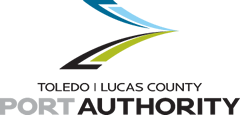
SPONSORED BY:

877-867-4218
YourStateBank.com

419-243-8251
toledoport.org

SPONSORED BY:

877-867-4218
YourStateBank.com

419-243-8251
toledoport.org
As published in Toledo Business Journal - January 1, 2019

In a recent interview with Toledo Business Journal, Laurie Cantrell, financing programs manager for the Toledo-Lucas County Port Authority, offered insight and advice for small businesses looking to obtain financing through a 166 ODSA or 504 SBA loan.
Cantrell began explaining the importance of a business plan for startup and existing companies, as it lays out the foundation of the business and why financing is the right decision for both the business and an area lender.
“It’s very important – especially for a startup business – to have a good business plan. They have to know who their competitors are, who their market is going to be, what the cost is going to be to start up their business, and what the costs are going to be for the ongoing business. They’re going to have to have probably at least three years of projections going forward so that they can make sure that they’re going to cash flow so that they can cover the debt. So all of that should be included in the business plan,” said Cantrell.
“We always try to help the borrowers whenever we can. If it’s a startup and they don’t even know where to start – they just have an idea – we will usually refer them to the Small Business Development Center (SBDC) at the Chamber to help with a business plan because that’s really the first start. No matter if you’re a startup or an existing business, we’re still going to have questions. We really need to know, ‘What are the project costs? When are you looking to expand your business? Does it make sense to do that? Are you going to be able to cash flow once you take on this additional debt? Is your revenue going to cover what this new debt is? Etc.’ That’s all part of a business plan and it’s really more in depth if you’re a startup company,” said Cantrell.
When discussing the importance of financial statements / tax returns, Cantrell noted that the latter is more important in the financing process, although the former is nice to have.
“We usually go back three years for financial statements, but they don’t have to be audited because we require tax returns, so it’s really more important to have those. Some small businesses don’t really have financial statements other than internal ones, so it’s not as important as long as we have their tax returns. That’s really what the SBA and the State key in on for the 166 ODSA loan,” said Cantrell.
Cantrell noted that there are collateral requirements for the 166 ODSA and 504 SBA loan.
Cantrell explained, “Any type of loan that we do, there are collateral requirements. However, the SBA will not turn someone down strictly from a shortfall of collateral, so if the loan makes sense – could be if they’ve been in business at least two years and they cash flow – the SBA won’t strictly turn them down for a shortfall of collateral like a bank would. So in the event that someone’s got a little bit of a shortfall, we will first look to see if there’s any additional collateral. Maybe they’ve got equity in their house, or maybe they’ve got some equipment that’s free and clear, etc. So we will try to make up that shortfall of collateral. If we can’t and the loan still makes sense – it’s good for the business, they cash flow, they’ve got strong financials, etc. – we’ll still do it with a shortfall of collateral.
Cantrell also offered general advice to any business looking for financing. She noted that it starts with the business plan, but also to check on the owner’s credit score and to make sure everything is currently paid, having a personal finance statement, and to have an interim bookkeeping system.
“So first and foremost, have a business plan and if not, know where to get help with the business plan. Secondly, a lot of small business owners are really good at what they do. They’re small business but they’re not as adept at making sure their credit is current. So I recommend they get a copy of their credit report and take a look at it because I can’t tell you how many times the credit report comes in and there’s things on there that they weren’t even aware were on there,” said Cantrell. “It’s also important to make sure that everything’s paid current and making sure that you have a personal financial statement, as we require that, and you’ll want to get that updated. Other things could be just making sure that you have some kind of interim bookkeeping system, and make sure that you know exactly what your expenses are and what your revenues are.”
Cantrell also explained the benefits of an SBA loan to a small business, including long-term fixed rates and having to pay a smaller percentage of a down payment.
“First and foremost, long-term fixed rates are a great benefit to SBA financing. Banks will typically not go longer than five years on a fixed rate. So after the five years, you have to come back and renegotiate and your rate will probably go up because it’s only fixed for five years max. The SBA will now, starting this year, go up to 25 years in a fixed rate. So 10 years, 15 years down the road, people don’t have to worry about what their payment amount is going to be, especially in the rising interest rate environment that we’re in now,” said Cantrell. “The second thing is banks typically require at least 20% – sometimes 25% – of a down payment on the loan. With the SBA, you only have to have 10% down if you’re an existing business and 15% if you’re a startup. So those are two really critical pieces that can help a small business”